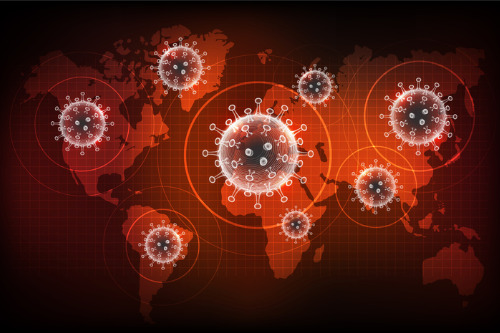AIR Worldwide Releases Coronavirus Estimates

As of Tuesday, 147 countries, areas and territories had reported confirmed cases of COVID-19, according to AIR Worldwide, a catastrophe risk-modeling firm. China has been most affected by the outbreak, with 82,007 cases and 3,338 deaths. However, China has reported that the number of new cases is declining.
- Outside China, 102,968 cases had been reported, with 4,191 deaths.
- South Korea had reported 8,320 cases and 81 deaths. New cases there are reported to be declining
- Italy currently has the largest outbreak with 27,980 cases and 2,158 deaths
- Iran had reported 16,169 cases and 988 deaths
- Spain had reported 11,178 cases and 491 deaths
In the US, case numbers are still growing as testing is expanding. as of Tuesday, the US had reported 3,536 cases and 58 deaths, according to AIR Worldwide.
“Based on the estimations and projections from the AIR Pandemic Model, we estimate that this may represent a moderately conservative projection of cases; the vast majority will be asymptomatic or have mild symptoms,” said Dr. Narges Dorratoltaj, senior scientist at AIR Worldwide. “AIR projections also suggest that the number of mild to moderately symptomatic cases globally from March 18 to April 01 could range between 600,000 and two million, and the number of severe cases could range between 200,000 and 900,000, with deaths ranging from 10,000 to 30,500.”
AIR Worldwide’s estimates account for uncertainty and underreporting, the firm said. Mild to moderate cases are the least likely to be reflected in official reporting, but it is likely that even severe cases and deaths will be significantly underreported, the firm said.
“The difference between the low and high ends of the range is driven by a few factors,” Dorratoltaj said. “Uncertainty in the number of confirmed cases and the transmissibility of the virus play a significant role. Specifically, the lower end of the range represents a scenario where (a) the true number of cases is relatively closer to what has been reported than estimated, and (b) the possibility of containment measures (such as social distancing and quarantine) become more successful in reducing the transmission. If containment measures — driven by international and/or local authorities — are successful, this could restrict the human-to-human transmission sufficiently to bring the eventual number of cases to or even below the low end of the modeled projected range of cases.”
The Fundamentals Of Asset-Liability Management
Author: Ricardo Goulart ... Read more
Enhancing Shareholder Value Through Fiscal Responsibility
Author: Brett Hurll &nb... Read more
The Importance Of Life Insurance In Financial Planning
Life is unpredictable, underscoring the cardinal rule within the realm of finances, "expect the unexpected.” Life insu... Read more
How Insurance Companies Determine Premiums
Decoding the labyrinth of how insurance companies determine premiums isn't as daunting as it seems. Essentially, insuran... Read more
Different Types Of Insurance And Their Benefits
Engaging with the intricate world of finance presents an age-old certainty - "Different types of insurance and their ben... Read more
Machine Learning In Risk Assessment For B2B Loans
Risky business, and even riskier decisions – that's where machine learning in risk assessment for B2B loans finds a pl... Read more

